Chronique:Canon Fodder - Of Protocols and Prisons
ISSUE 125
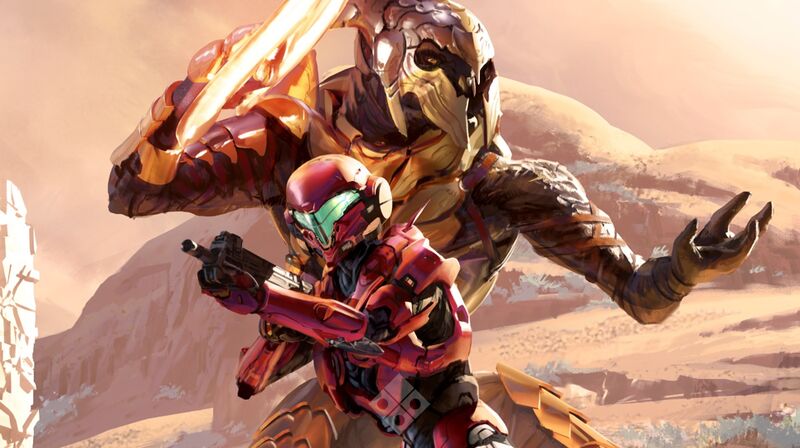
Alex Wakeford
3/7/2022
Welcome back, fiction fans!
Is it March already? Not sure how that happened, but that just means we're getting ever closer to some really exciting new Halo media, so let's get straight into it…
Cast Out[modifier le wikicode]
Last issue, we dropped the official summary for Troy Denning's upcoming Halo: Outcasts, which will follow Arbiter Thel 'Vadam and Olympia Vale on a journey they undertake in 2559 that brings them back to the familiar wastes of Netherop from the novel Halo: Oblivion.
While we did not reveal the cover art alongside the summary, as you can see from the header image of this issue, the time has come to show the inimitable Isaac Hannaford's depiction of 'Vadam and Vale, standing valorous and vigilant against the vexatious vicissitudes brought about by what they will face.
You can pre-order Halo: Outcasts here!
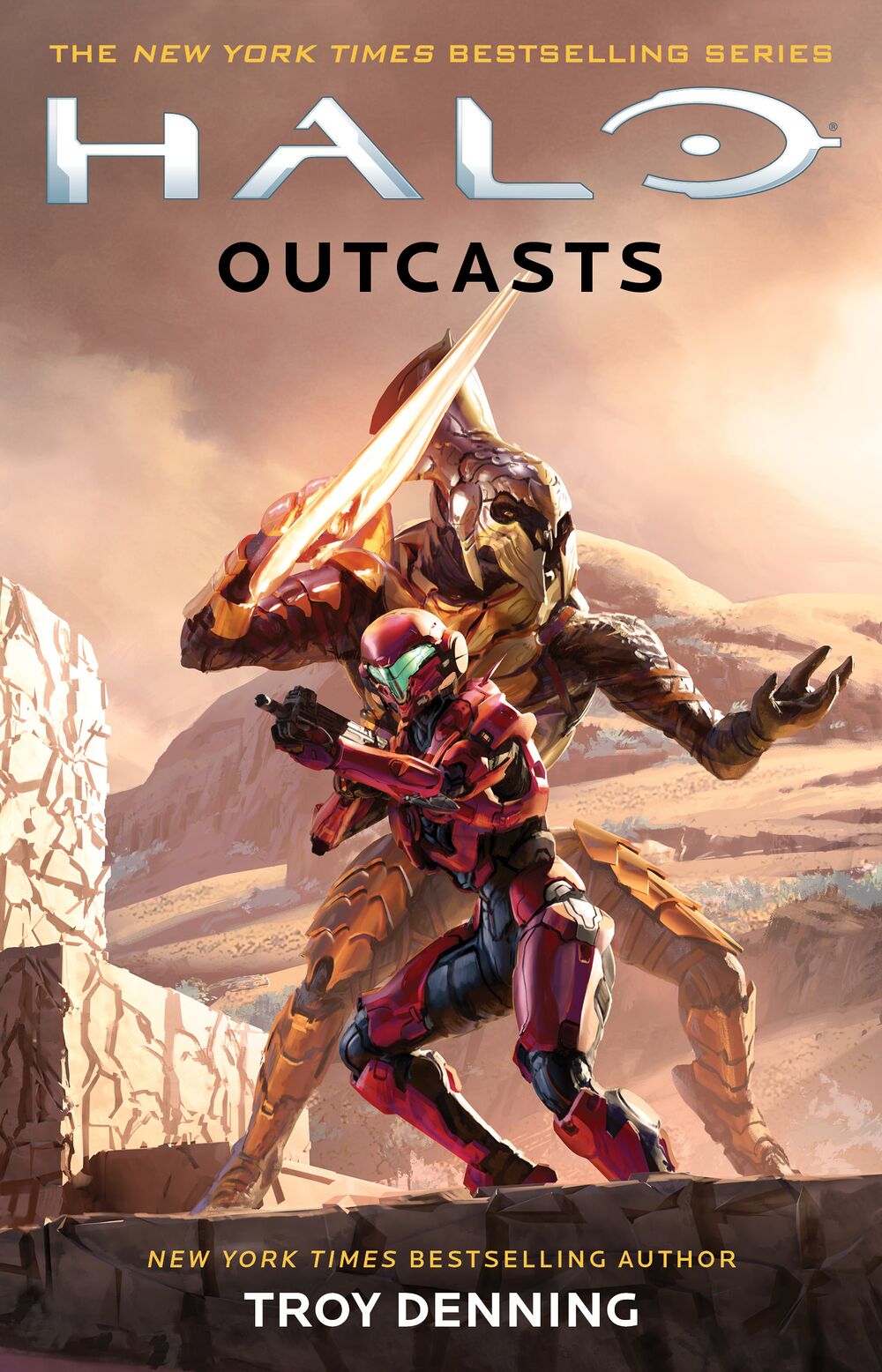
CLICK HERE FOR GLORIOUS EMBIGGENING!
Casting The Die[modifier le wikicode]
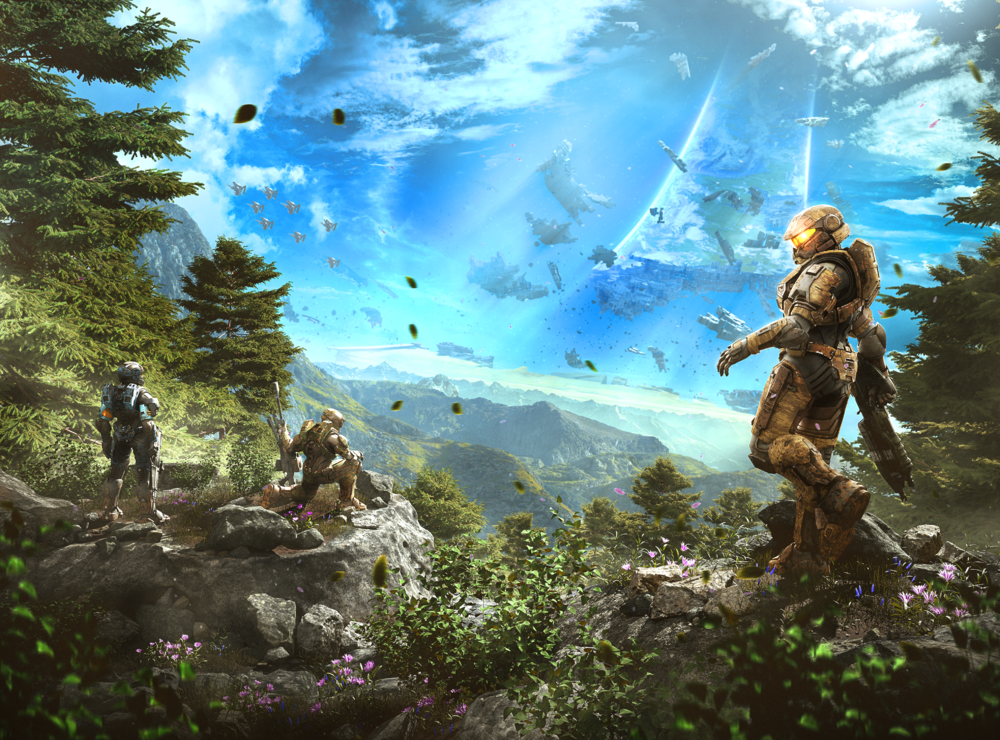
Before Outcasts, however, Kelly Gay's next outing in Halo: The Rubicon Protocol is set on the shattered shores of Zeta Halo and closely connects to some of the tales told in Halo Infinite’s audio logs.
The book is slated for release on August 9, so let's take a look at what awaits…
I'm particularly excited about this book because it echoes, in some ways, Halo: The Flood. Rather than being a direct adaptation of the events of Halo Infinite, as The Flood was to Halo: Combat Evolved, Kelly's novel is directly adjacent to it.
The storytelling style of the Halo games—as mostly linear FPS campaigns—often puts us in the middle of much larger events where we get a glimpse at other stories that have either already happened or are going on beyond our limited perspective. We experience the onset of the Great Schism in Halo 2, but it is as an incidental environmental detail as we make our way through a small part of High Charity in pursuit of the Prophet of Truth.
What we see through the Master Chief's eyes is never the full story, and those porous gaps offer incredibly compelling opportunities for extended media to explore other parts of the bigger picture. The Master Chief is adrift in space for six months after the UNSC's defeat at Zeta Halo, during which time it is up to another group of Spartans to unite and protect the scattered human forces.
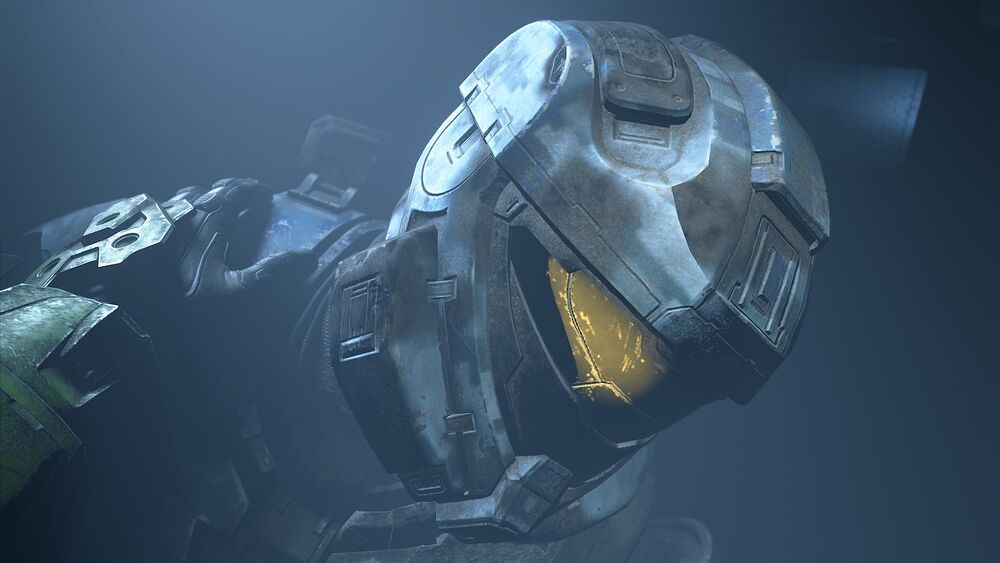
This is a standalone adventure, and now that the context of Halo Infinite’s campaign has been experienced and digested, we can say for certain that it will be in some ways a standalone tragedy. From the beginning you know the end (especially for poor Spartan Stone in the image above), but the devil—as they say—is in the details, and there's really nothing quite like twisting the knife by getting the chance to know and love these characters, seeing things from their perspective when the night is darkest and hope seems lost.
We'll get to know a few more of these Spartans in The Rubicon Protocol, including Horvath, Kovan, and Stone. For the latter, next time you see this hero at the start of Halo Infinite, when the Chief is caught in a moment of solemn reverence for her sacrifice, you will know her story—not just that she died, but who and what she died for…
Principal Protocol[modifier le wikicode]
The titular ‘Rubicon Protocol’ itself is a matter of interest, as it is referenced in Halo Infinite and evokes the familiar name of the Cole Protocol that came to be such a definitive act of necessity throughout the Human-Covenant war (and the title of a very excellent novel by Tobias Buckell!)
In the context of the years following the definitive events of 2552, the location and safety of human worlds has not been as big a safeguarding issue due to the fragmented and uncoordinated nature of the Covenant remnant factions. With their attention turned inwards, splinter groups vying to claim as much of the once unified Covenant war machine as possible, few possessed the power to raze human worlds with the coordinated zeal of the last three decades. And when Earth was invaded by Covenant forces in October 2552, the Cole Protocol's initial directive effectively came to an end (until some of its safeguards were revived in response to the Created uprising).
With the rise of the Banished, their goals are far more distinct. They seem to seek to claim the most powerful weapons in the galaxy and have been building their size and capacity in the shadows for years, fighting with the fiery strength of loyalty and purpose in their hearts.
Already, they have sought to seize the Ark, the great foundry of the Halo Array, before Atriox expanded his gaze to Zeta Halo and the enigmatic captives held within. With UNSC forces scattered in the wake of the Created uprising, critical infrastructure lost, a new directive became necessary: the Rubicon Protocol.
Halo Infinite – Spartan Audio Logs, Scattered #01
Where the Cole Protocol was designed to specifically erase data that would limit the enemy's ability to find Earth, both the quote above and the name of the Rubicon Protocol itself suggests that this is a different kind of approach to asset denial. You have crossed the proverbial Rubicon, the die has been cast—it is determined that what the Banished stand to gain is absolutely unacceptable, and the only remaining resort is to ensure they don't get it no matter the cost.
We'll learn more about this and see where it takes this cast of characters when Halo: The Rubicon Protocol releases later this year. You can order your copy here!
Antecedent Annihilation[modifier le wikicode]
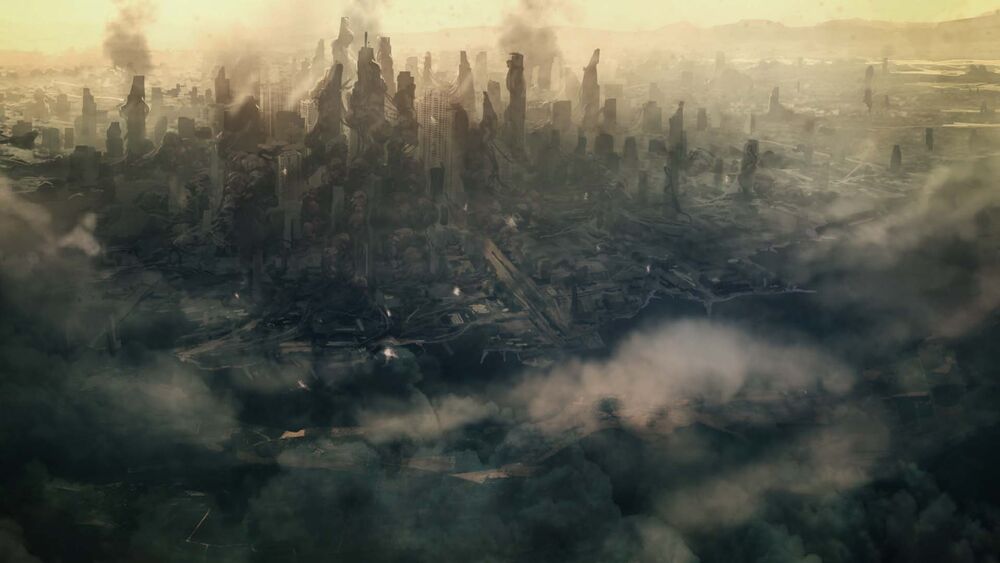
Halo 3: ODST’s fan-favorite Firefight is getting an incredibly cool upgrade for Halo: The Master Chief Collection, bringing the Flood to the mode for the first time—alongside other AI allies—as part of the next MCC update.
This seemed like a good opportunity to reach back into some obscure narrative corners, as it is often the case that the key to our future can be found in the past—and, keeping with our theme of protocols, there are some especially severe ones in place regarding how the Flood are to be dealt with. In this case, it leads us back to Halo: Spartan Assault.
Oh yeah, Spartan Assault lore, I bet that wasn't on your Canon Fodder bingo card!
The Xbox version of Spartan Assault included a unique cooperative mode spanning five missions that was framed by a cinematic where the UNSC Infinity’s AI Roland revealed the truth of the Flood's presence on Earth in November 2552, where the UNSC allowed the infested area to be glassed in order to contain the parasite. Roland says that in the event of the Flood's return, Spartans would be the first line of defense—and these co-op missions have two Spartans train against the Flood in a simulation.
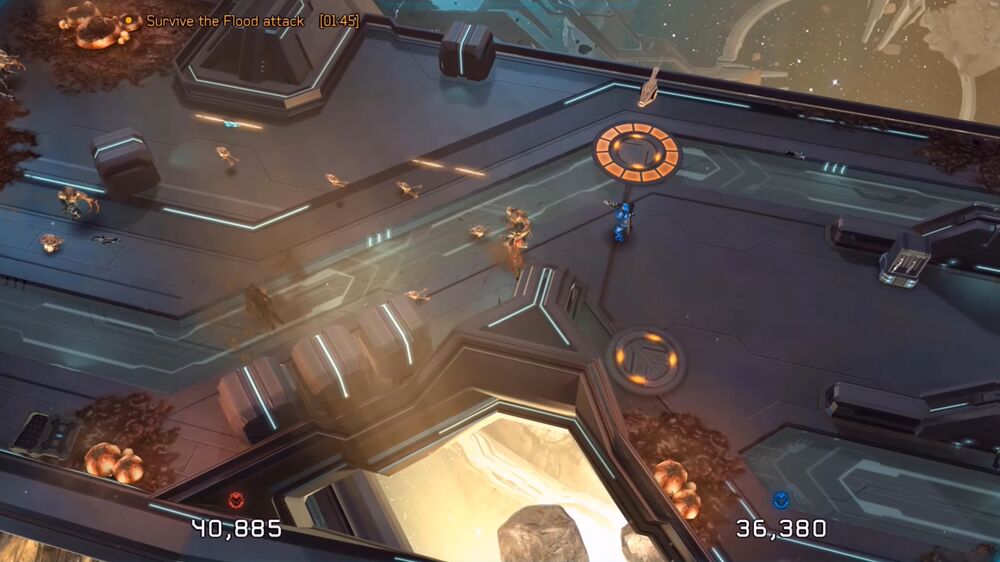
For some additional expansion on this: Counter-parasite training does indeed exist within the UNSC to prepare specially selected personnel for what they could one day be up against. It is notable, however, that not all possess the mental or physical fortitude to face these abominations as they consume whole worlds and the environment itself is twisted into sickened blightlands…
According to the SPARTAN-IV Field Manual, Spartans in particular are officially prohibited from gathering samples of Flood biomatter or attempting treatment of infected individuals as part of Emergency Contact Protocol UPSILON. When this protocol is in place, all UEG and UNSC rules of engagement are suspended as containment is the top priority.
CORRUPTOR protocol is to be declared in the event of a Spartan being infected by the Flood and the failure of subsequent safeguards (the nature of those “safeguards” are something one might infer from the Gallows visor description in Halo 5). This results in the authorization of weapons of mass destruction, such as orbital MAC strikes and deployment of fusion warheads.
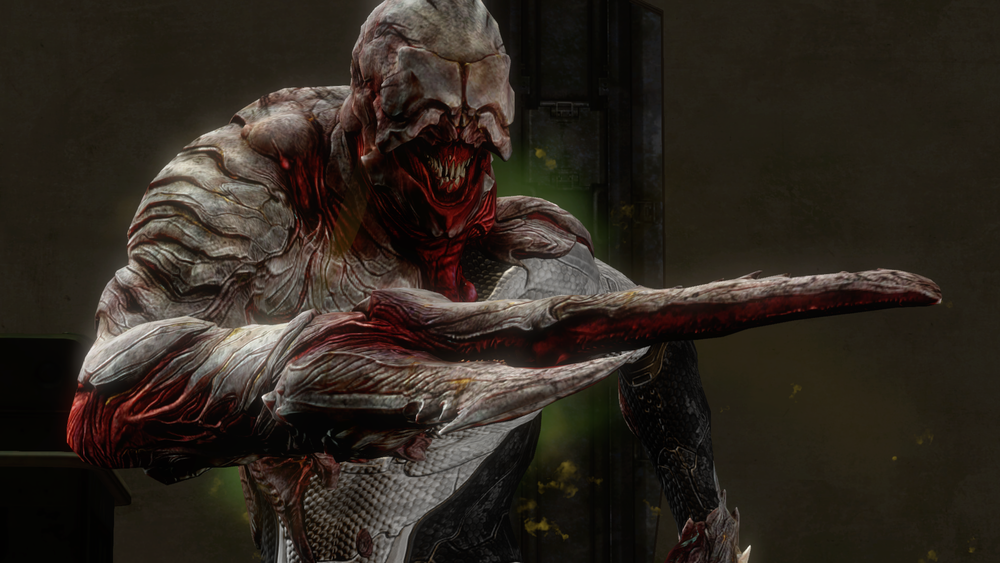
Rebirth[modifier le wikicode]
On a related note to the Flood, you all remember Halo: Silentium, right? Heard that's quite a popular novel around these parts (happens to be a personal favorite of mine, in fact)…
The epilogue to this story, Halo: Rebirth, written by Chloe Bear, was previously accessible through the Xbox 360's Halo Waypoint app, requiring loyal readers to enter codes found at the start of each chapter in Silentium in order to access the 45-minute audio narration (along with 'The Trial of Mendicant Bias').
For those who may not be familiar: this story is set in the immediate aftermath of Bornstellar firing Halo. The galaxy has been wiped clean, the Flood threat averted, and the final task of the Conservation Measure—returning the cataloged and indexed specimens to their worlds of origin—begins with the Forerunners' old enemy: humanity.
But first, a gathering is held to mourn the passing of the old galaxy and celebrate the birth of the new. At the end of all things, humans and Forerunners stand together as the brothers they always should have been.
I say, let this story remain in obscurity no longer!
We have repackaged this conclusive and emotional tale into a free PDF for all to access.
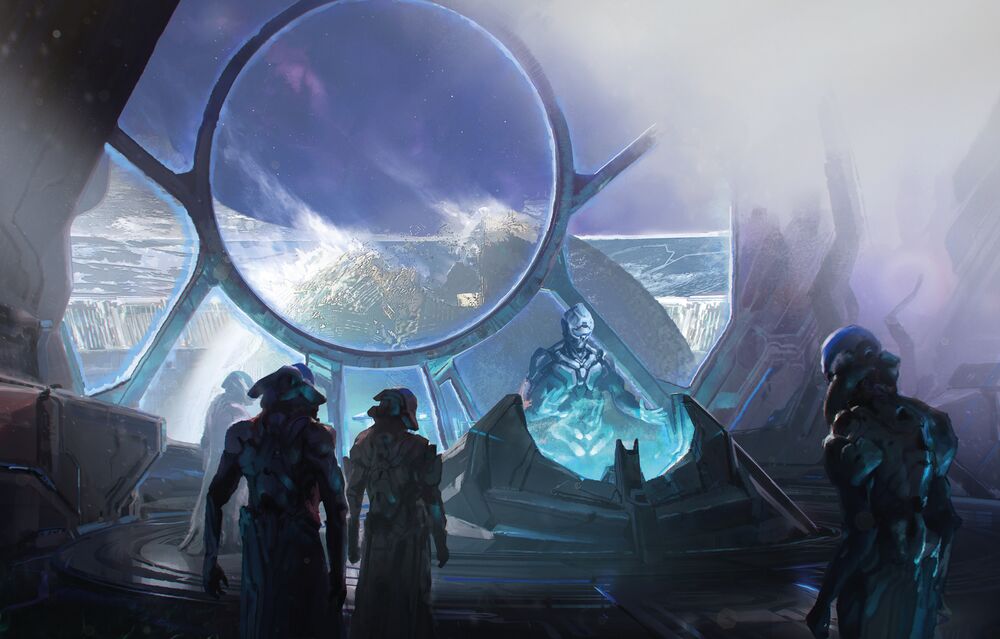
"Forgive us," I say. Have said. Will always say.
To Build a Home[modifier le wikicode]
The earliest raids conducted by Atriox, as he led the Banished in their formative days, were typically against human worlds that had already been swept over by the merciless war machine of the Covenant. The Banished would lay siege with speed and ease against those who were unlucky enough to survive—enduring a world-shattering catastrophe only to find themselves up against the unrelenting might of the Jiralhanae.
This opportunistic ‘smash and grab’ tactic was a core strategy of the Banished and proved to be remarkably efficient, providing them with ample opportunity to salvage weaponry and other materiel to arm themselves. In time, they would turn to raiding Covenant supply lines and storehouses, and eventually even the more prominent Covenant tithe worlds were not safe from the closing fist of Atriox.
Possessing greater military capacity than ever before by 2560, the Banished's approach of quick planetary infiltration through space-to-ground domination has only continued to expand and evolve to become their prime method of occupation. Enemy forces are immediately put on the back foot as dreadnoughts deploy countless drop-bases and artillery to rapidly establish a foothold on the ground, immediately fortifying infrastructure around critical positions.
Following the razing of Oth Sonin, where Cortana's Guardians were deployed to shatter Doisac, it is the Ark and Zeta Halo where the Banished's presence is most strongly felt. A new home is required, and it is the great foundry of the Forerunners and their most terrible weapon—and the innumerable mysteries within—that will ensure the Jiralhanae do not just survive, but thrive in the wake of recent devastation.
Under Escharum's leadership, the Banished claimed control of key sites on Zeta Halo which each demonstrate the versatility and prowess of their occupational infrastructure, standing also as symbolic monuments to their own strength and the weakness of the fragmented human resistance.
As The Rubicon Protocol will take us to some familiar locations encountered on Zeta Halo, let's take a closer look at some of these outposts…
Outpost Tremonius[modifier le wikicode]
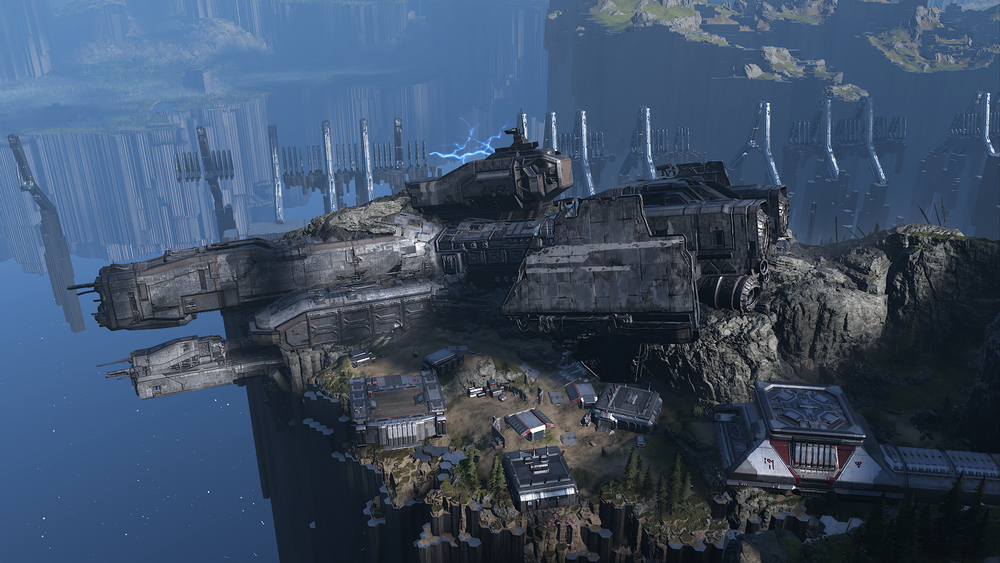
The UNSC Mortal Reverie was a Mulsanne-class frigate that crashed on Zeta Halo following the Banished's strategic ambush of the UNSC Infinity and its escort fleet. On December 15, 2559, the wreckage of the ship was located by Spartan Vedrana Makovich and it became the centralized base of operations for surviving UNSC forces in this localized area of the ring.
This makeshift fortification would not last, however, as the Banished—led by Chieftain Tremonius and Captain Arthoc (a high-value target you can find in the campaign)—assaulted the Reverie on January 31, 2560, and claimed the site for themselves. Escharum rewarded Tremonius for this victory by naming the subsequent outpost in his honor.
Horn of Abolition[modifier le wikicode]
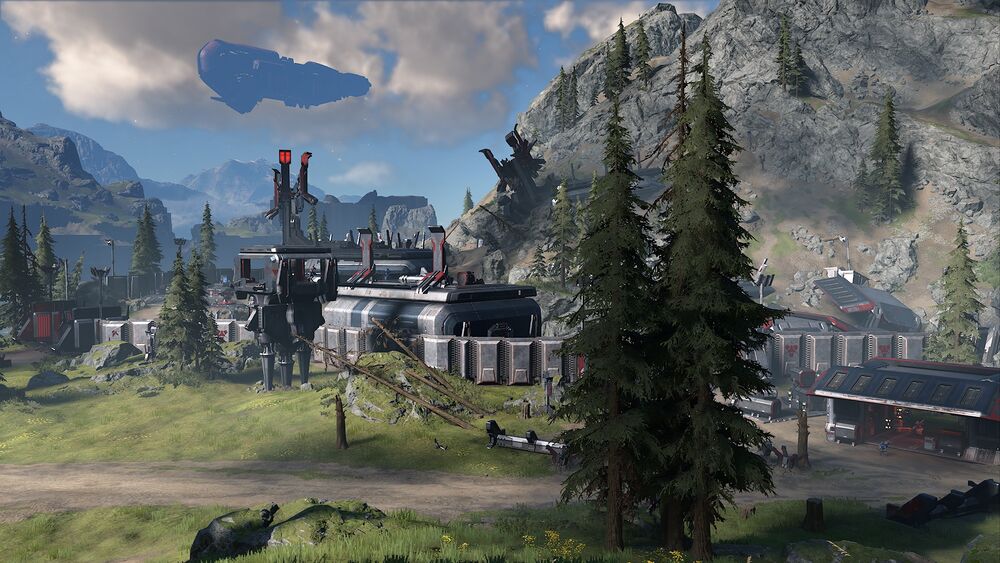
One of the core differences in the experience of fighting the Banished compared to the Covenant is the felt presence of the former's infrastructure. Assembly forges, communications outposts, munitions factories—these things were seldom seen in previous games because they were not typically deployed, but hosted in centralized locations (such as High Charity, cruisers, and support ships).
It was rarely in the Covenant's interest to occupy human colonies for extended periods and set up external infrastructure unless there was something of value they were pursuing, as the conclusion to their assaults often ended the same way: glassing the world from orbit.
This is not the case for the Banished, and the Horn of Abolition stood as one such example of why. This outpost was utilized to link and relay communications throughout the immense Banished presence spread across the vast surface of Zeta Halo, while also tracking remnants of the UNSC resistance. Escharum saw this outpost as a symbol of the Banished's strength, of many being forged into one under the unifying might of Atriox.
As heard in the ‘Nowhere to Hide’ audio log of the Outpost intel, two Marines attempted to destroy the outpost with their last C-12 satchel, but the landslide only took out a single building which did little to deter the site's Unggoy Commander, Jopmop, from his duties.
Annex Ridge[modifier le wikicode]
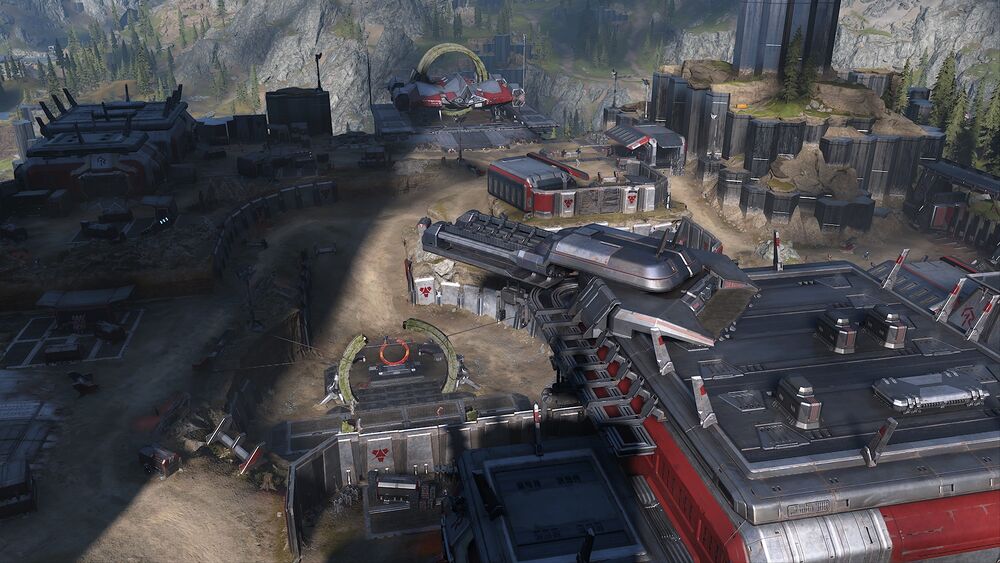
Among the myriad of Forerunner artifacts, devices, structures, and other objects of interest on Zeta Halo, the stone ring totems have proven to be perhaps the most inscrutable, seemingly predating even the Forerunners themselves. Even the monitor, Despondent Pyre, spent millennia attempting to decipher their engraved runes.
The Banished, too, sought to understand these totems, which was the purpose given to the Annex Ridge research facility. This site was placed under the watchful eye of Zeretus, who was among the first to join the Banished and played a key role in the recovery of the slipspace flake within the Anodyne Spirit on the Ark that enabled Atriox to return to the galaxy. It was Escharum's belief that the technology and artifacts excavated on Zeta Halo were key to the destiny of the Banished.
Riven Gate[modifier le wikicode]
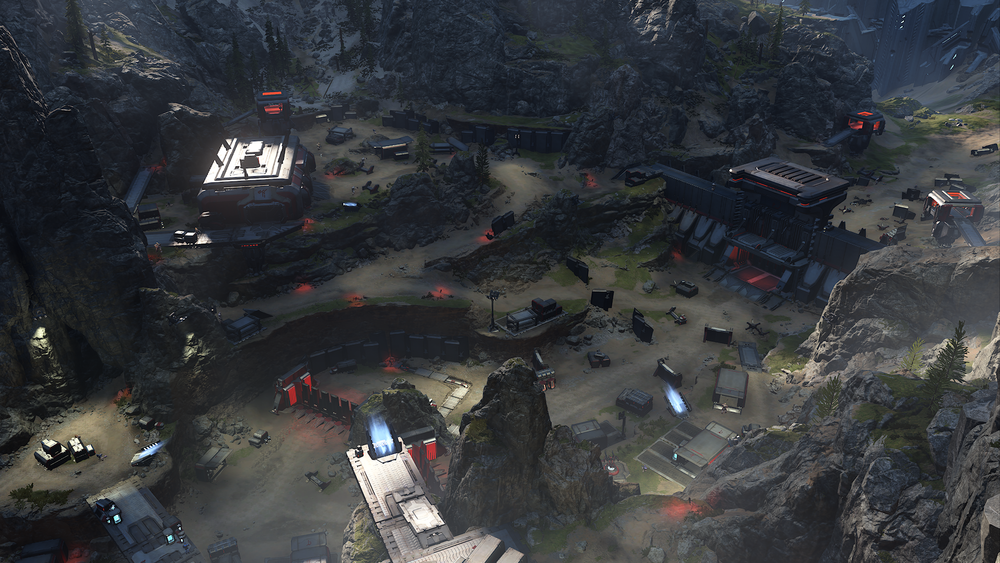
As the Banished were the dominant occupational force on Zeta Halo, setting up a central checkpoint to control transportation routes to other outposts and prevent human access to the ring's remediation systems gave them a key strategic advantage.
The Riven Gate effectively trapped UNSC forces in Banished territory, and it was near this location that Spartan Bonita Stone learned of the army being massed to march on the Reverie.
Forge of Teash[modifier le wikicode]
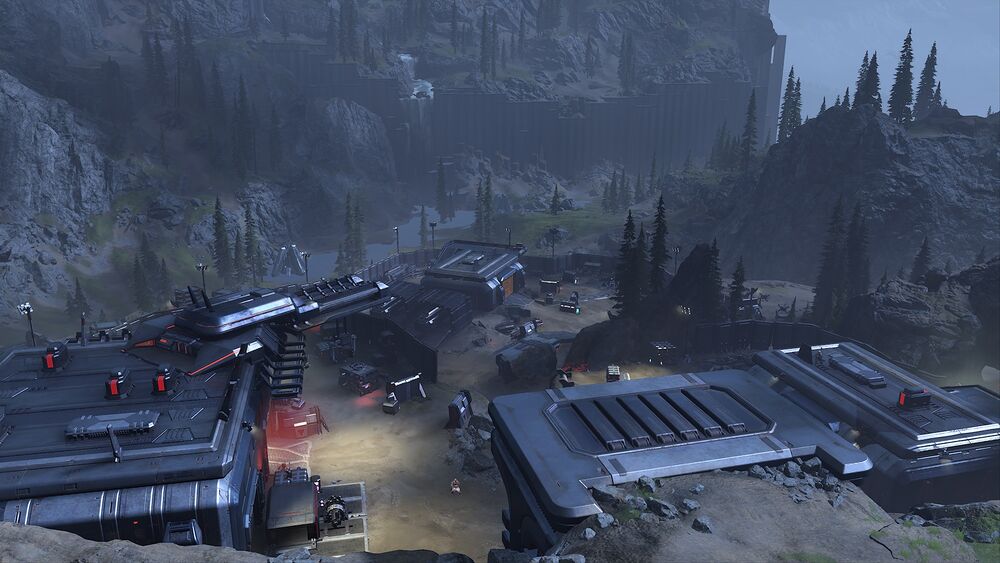
The Forge of Teash served as a maintenance depot and production site for the Banished, bolstering their presence and capacity by fabricating and repairing a great number of machines for their distributed forces.
This outpost's location made it a key site for supporting the excavation efforts at Site Novem, where the Banished were digging into the Conservatory. It contained fuel silos and repair bays that were used to maintain the mining equipment used for such a purpose—something that the Weapon will comment on (fun fact: her dialogue changes depending on whether you've completed the mission Excavation Site and encountered Ransom Keep).
Managed by Commander Durakkus, Escharum kept a close eye on the excavation operation of the Conservatory due to the personal interest of the Harbinger, who inspected the site herself.
Ransom Keep[modifier le wikicode]
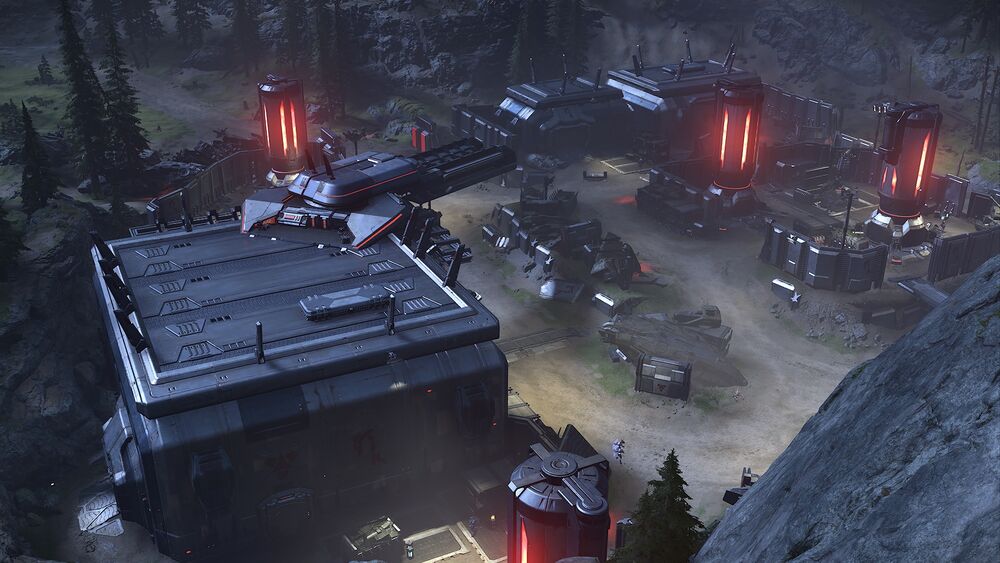
Operating in-parallel with the Forge of Teash, Ransom Keep was a smaller maintenance depot that served primarily as a salvage site, harvesting UNSC materiel across the ring's surface and grinding their titanium bones into feedstock for the Banished's own purposes.
While stripping UNSC hardware to repair and maintain Site Novem's excavation equipment, a lone M808 Scorpion remained in Ransom Keep's vehicle bay—whether the Banished intended to use one of the humans' own machines against them or simply hadn't gotten around to breaking it down is unclear.
The excavation sites themselves were identified by Jato 'Ratum and his scouts. This Sangheili had served the Banished on the Ark before returning to the galaxy with Atriox, he was the sole survivor of a mining expedition that was decimated by artillery fire and promised fellow Commander Vimo 'Arach (who may or may not have some relation to Kitun and Jacul 'Arach from the audio logs in Halo 5) that he would one day tell him of his time on the Great Foundry of the Forerunners.
Armory of Reckoning[modifier le wikicode]
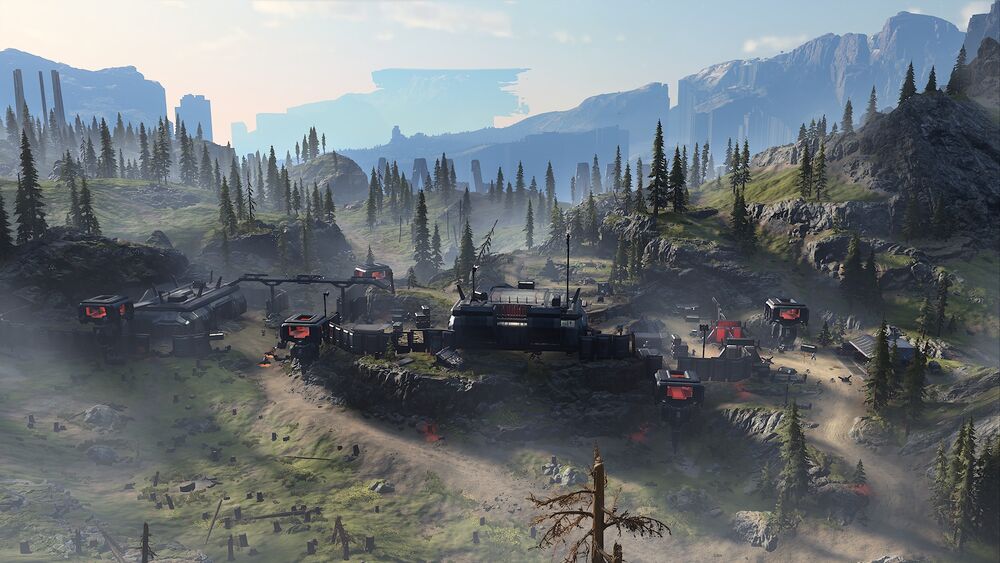
The Armory of Reckoning was an outpost that was personally installed by Escharum himself for the purpose of conducting repairs, as well as servicing and maintaining the Banished's extensive and deadly arsenal of weapons.
This outpost would receive necessary supplies and materials (such as alloys) from Ransom Keep; munitions printers were so extensively used that the Armory of Reckoning was down to just three functioning units by the time the Master Chief arrived to take the site down.
Recovered audio files from the Unggoy known as High Sumpter Bingflip have detailed an attempted coup at this outpost following a shortage of meat. Bannix, commander of the Armory of Reckoning, put down these insubordinate Jiralhanae and decreed that any further infighting would be punishable by death after the situation caught Escharum's eye. As the most critical substation for supplying Banished forces beyond the House of Reckoning, its continued operational status was a matter of vital importance.
Redoubt of Sundering[modifier le wikicode]
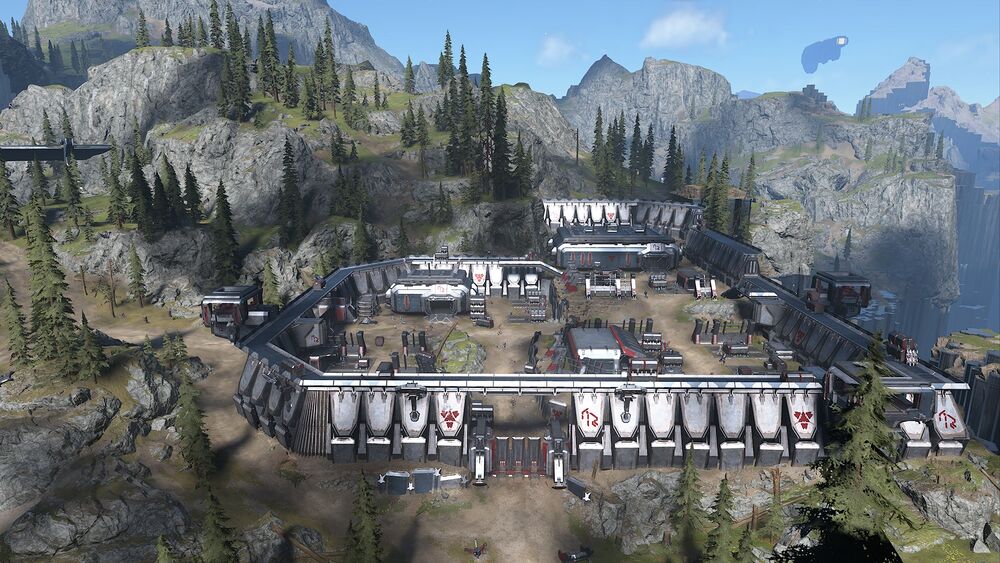
The Redoubt of Sundering was a processing outpost for prisoners who were brutally detained and monitored before they were sent to the dreaded halls of the Tower where they were left to the mercy of Chak 'Lok.
Escharum noted that while the human forces had been laid low to ensure the Banished's occupational dominance, the survivors were persistent and tenacious, but would divulge the location of their fellows after Chak 'Lok had attended them. For this reason, Escharum commanded that any human survivors should be kept alive and brought to this harrowing redoubt.
Kaidon Thav 'Sebarim was the resident commander of this outpost, a Sangheili who was renowned for the wanton slaughter he committed at the battle of Harrow where a city siege resulted in over 700,000 human civilian deaths.
The Tower[modifier le wikicode]

Commonly known as Chak 'Lok's Tower, this was a heavily fortified stronghold under the terrible control of the sadistic Banished warlord, used to violently torture and interrogate enemy soldiers in ways that would lend new meaning to the words ‘palace of pain.’
Those who survived Chak 'Lok and his machines, beaten and broken, were often ferried to the House of Reckoning to make their final stand.
Combat Medic Lucas Browning found himself brought to this location after Escharum forced him to release the Harbinger from her cylix. Spartan Hudson Griffin was also brought to the Tower after a failed assassination attempt against Escharum in January, 2560. After the war chief gave the order for the Banished to take the Reverie, Griffin would be held and tortured here for four months before the arrival of the Master Chief.
The House of Reckoning[modifier le wikicode]
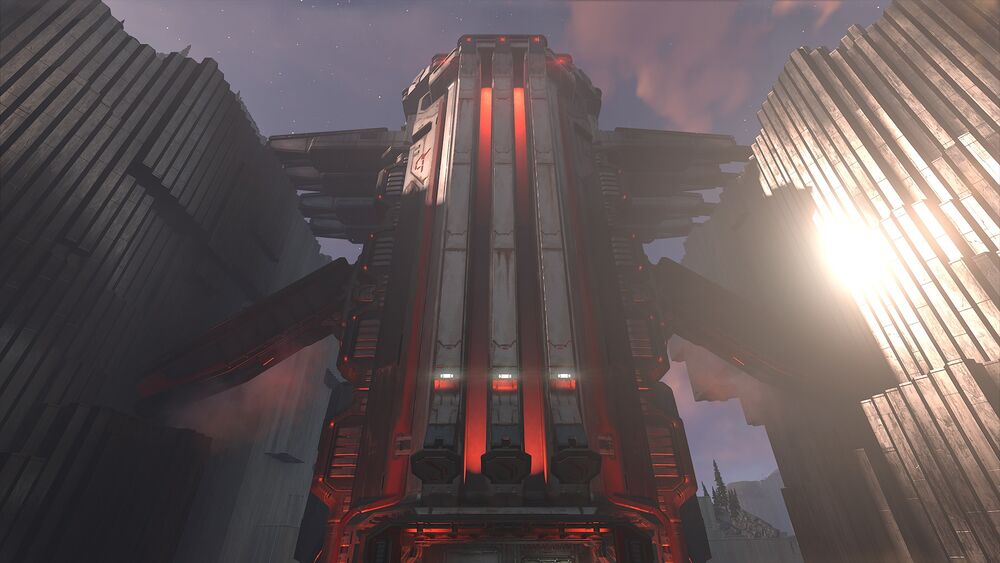
The final destination for many prisoners who had been processed at the Redoubt of Sundering and ferried through Chak 'Lok's Tower; the House of Reckoning functioned as Escharum's primary base of operations.
Perhaps the most notable feature of the House of Reckoning were the combat zones made from salvaged UNSC structures, filled with weapons and vehicles like a twisted museum—a monument to humanity's failure. Banished troops would keep their skills sharp by pitting themselves against the prisoners of war who were forced to make their last stand here.
Old, New, Borrowed, Blue[modifier le wikicode]
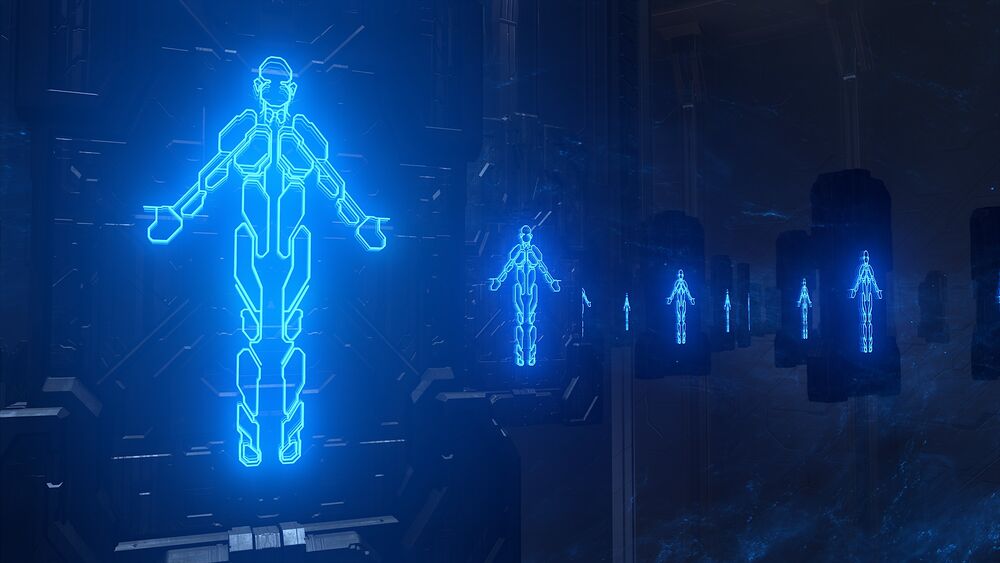
One of the most fascinating things in an ongoing franchise is how certain ideas and concepts can move from a place of obscurity in deep lore to the surface in a mainline game where they become a seen and known part of the community's common lexicon.
This time last year, if you mentioned the word ‘cylix’ to a fellow Halo fan, few would have understood what that was, as the only textual reference to such a word exists in a single page within Halo Warfleet—though these repositories do appear in the ‘Sacrifice’ adjunct to Halo: Shadows of Reach as well.
Halo: Sacrifice
(In fact, this seems an opportune aside to drop the free PDF for ‘Sacrifice for those who haven't had a chance to read it yet!)
HALO: SACRIFICE (PDF DOWNLOAD)
Indeed, their original appearance goes yet further back to ‘Origins,’ the first episode of Halo Legends, where these genetic repositories are shown during Cortana's narration of the Reintroduction period—the final stage of the Conservation Measure where the Forerunners returned the species that had been cataloged and indexed by the Lifeworkers to their origin worlds.
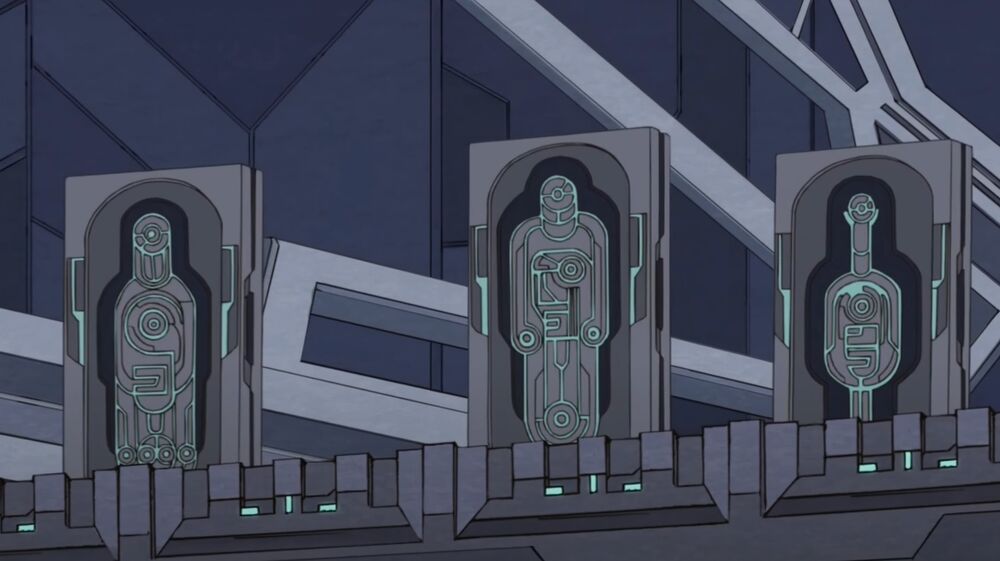
This might be thought of in parallel terms to Halo 4, where one of its core images was that of the Cryptum—the advanced stasis chamber and prison for the Ur-Didact. The interesting difference there, however, is that the concept of the Cryptum, which first appeared in Greg Bear's Halo: Cryptum in 2011, was specifically developed alongside the game.
Halo Infinite has a central theme of rebirth and renewal, something that extends across the narrative in many ways alongside its core creative pillars. Halo has always been a multimedia franchise, so looking further afield to things like Halo Legends (which also inspired the Master Chief's GEN3 armor) is absolutely part of that ‘language’ of legacy as well.
But what makes these interesting in their narrative application is that they're never wholly representative of one thing. Just as the Cryptum was a vessel of rebirth, we also came to understand it as a prison in Halo 4 and Halo 5, and that is a parallel juxtaposition Halo Infinite presents with cylixes too. We have previously understood this technology as a symbol of hope and renewal through its use in the Conservation Measure, with life emerging once more to flourish, but with the context of the Xalanyn—adding some interesting wrinkles to the very last days of the Forerunners after firing Halo—we come to see that it is also one of containment, of sequestering life away from the galaxy.
As such, cylixes are a marriage of contrasts, as they arrived at the crossroads of being something old (as they are incredibly ancient devices, remnants of the past), yet new (never seen in the games before and given new meaning), they are borrowed (having already existed in the lore), and they are blue (we, er… put blue hardlight lines on 'em! Except on those ones…)
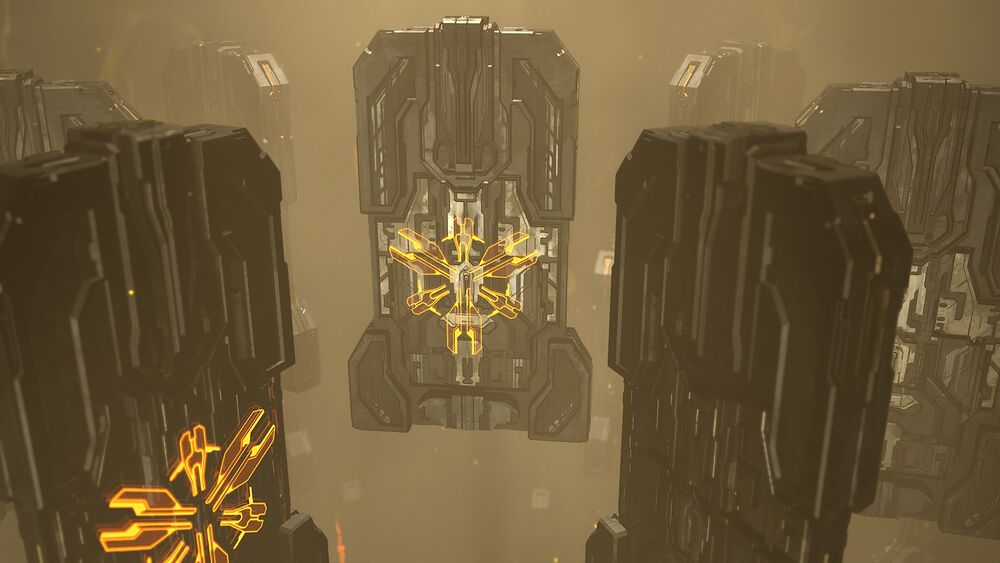
Community Q&A[modifier le wikicode]
Monica Lowry: (Shocking news: I am asking about Veta.) What was in THE LETTER?
The message capsule provided to Frederic-104 by Lieutenant Veta Lopis contained critical information about the Ferrets' infiltration of the Keepers of the One Freedom that was passed to ONI through Captain Veronica Dare. After extensive analysis, Captain Dare returned the top third of the message to Spartan-104, understanding its personal significance.
Grim said we would tell you what that part of the lett
For_Urs_Sake: How's New Phoenix doing? Is it still a complete ruin or has any life, human or otherwise, returned there?
After the Didact's attack on Earth in 2557, which resulted in the assimilation of seven million inhabitants of New Phoenix, the city was placed under quarantine for study. Eight months later, New Phoenix was reopened with Ruth Charet, President of the UEG, presiding over the ceremony.
More on this can be read in Issue #7 of Halo: Escalation where Spartans Gabriel Thorne and Tedra Grant attend the ceremony before Thorne returns to his grandmother's house to make peace with his grief.
HaloVFX: Where's Jerome/Red Team in relation to the Chief around the time of Infinite’s campaign?
The last known location of SPARTAN-II Red Team, as seen in Halo: Divine Wind (October 2559), was on the Ark where they continue to serve as the UNSC Spirit of Fire’s tip of the spear against ongoing Banished operations.
Zanzi: Is Let 'Volir still alive?
Let 'Volir is indeed still active and serves as the leader of local Banished forces on Installation 00, a position that Atriox granted him before he returned to the galaxy. More of this is explored in the novel Halo: Divine Wind.
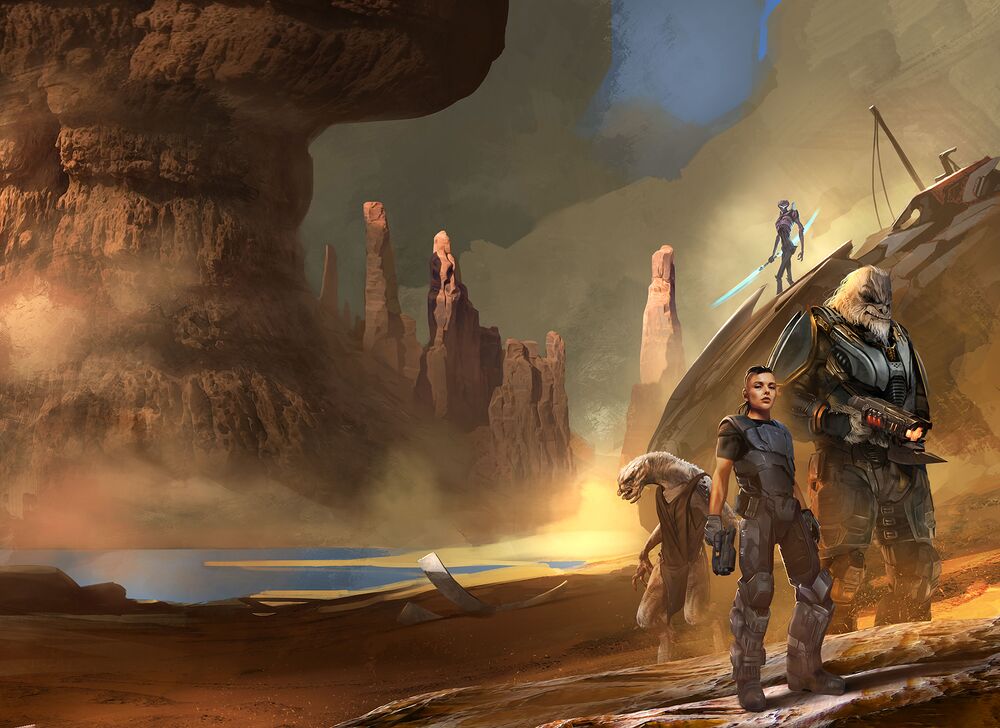
Um_bunny_: Prior to the loss of the Infinity, what did the daily life of an S-IV look like?
This varies depending on the operational tempo of their current assignment. As with most special forces, Spartans spend a great deal of their time training, recovering from training, and planning for future training—in between exercising more "kinetic" skills on the battlefield.
There are some additional sources which paint a broader image of life aboard the UNSC Infinity, which can be found in the Spartan Field Manual, the Halo: Escalation and Tales from Slipspace comics, and collector's edition content from Halo 4.
For example, all personnel on a Navy vessel are expected to do their part in keeping everything shipshape, Spartans receive no special treatment here and are duty bound to assist in routine maintenance and other menial day-to-day tasks.
Outside of training, a major feature of the UNSC Infinity is the Memorial Park atrium—a lush, self-contained biosphere that replicates the feeling of being on a planet, which is particularly useful for those who don't make it back home for shore leave very often. R&R opportunities include things like charity fun runs, poker nights, cage fights, cook-offs, and more.
TheThinestMint: Are there UNSC forces on other parts of the ring?
We know that, as of 2555, there were research outposts and other UNSC infrastructure based at various sites on Zeta Halo. A more updated examination of the UNSC's presence on the ring is given in Halo: Point of Light, set in 2558—shortly before the Created uprising.
It therefore stands to reason that other scattered pockets of resistance may indeed be located at other sites on the ring.
TheTrekspert: How did the Forerunners intend to use Thanolekgolo as a weapon against the Flood?
As is depicted in Halo: Nightfall, the Thanolekgolo gestalt displayed great sensitivity to the presence of active technology. In the aftermath of the events at Alpha Shard, it has been speculated within ONI—though remains unconfirmed—that the Thanolekgolo could be deployed against Flood incursions in the hope that they would be able to eliminate any technology the parasite had adapted and utilized before the deployment of Forerunner military personnel.
Peachedcrane60: Canonically, how many Grunt breeding chambers are on Zeta, and how many Grunts have they produced? I need to know… for… uh…. Art?
A relatively laissez-faire attitude is taken by the Banished towards notably prodigious Unggoy breeding rates… or so we hear.
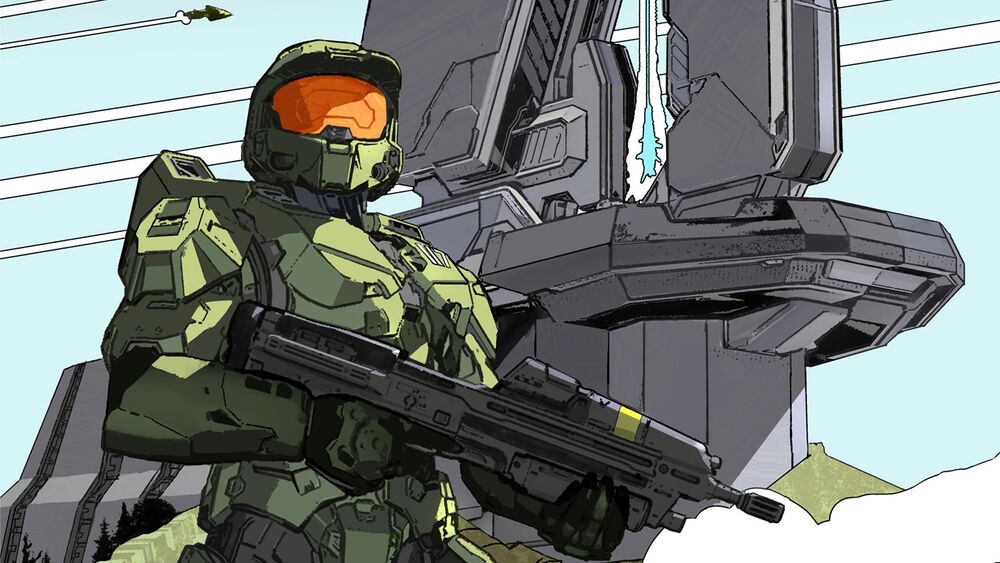
And so, we come to the end—tempting as it is to keep going and answer a dozen more questions, you'll just have to come back next month!
Oh, on the subject of next month, you might've heard that we've got a little thing coming you might be interested in—the Halo Encyclopedia. 488 pages of lore, old and new, with bespoke artwork for so many things that you have only ever seen in your own head before, brought to life in the most detailed exploration of the Halo universe's many characters, worlds, and technologies ever created.
We've got some special things planned to celebrate the encyclopedia's release which you won't want to miss.
Until then!